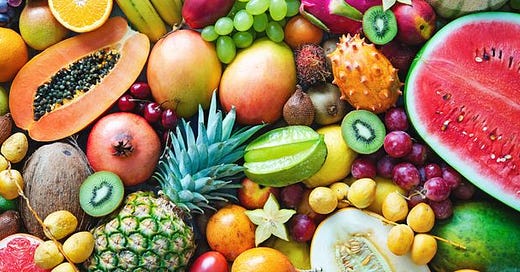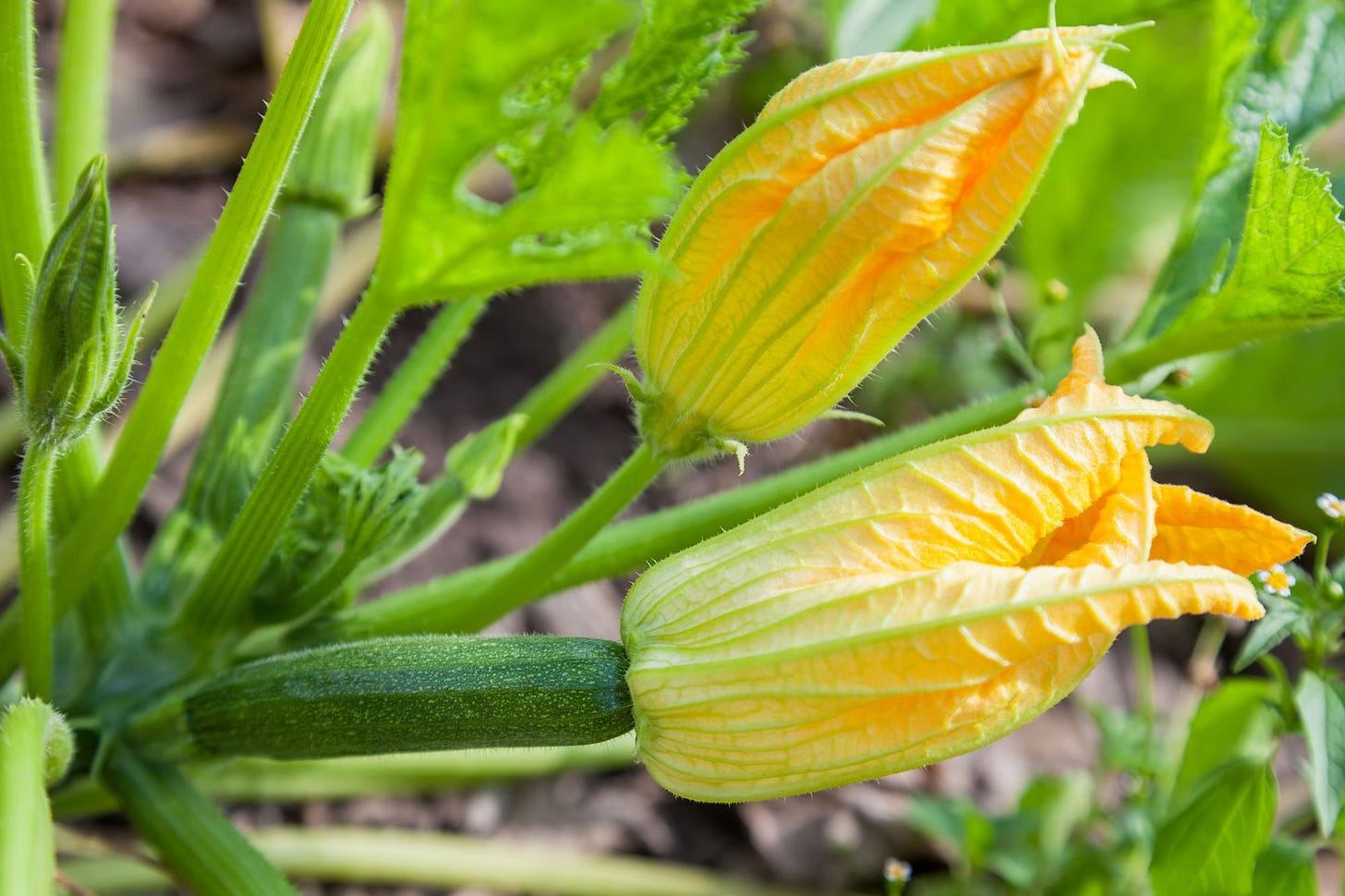Let me start by saying there’s little point to this post, other than to answer a question a friend asked at dinner last night: “I know tomato is a fruit, but… why?”
You won’t learn any valuable information from this post, it’s just for some fun and it’s a bonus blog this week. Please don’t try to tell people at parties that every vegetable they love is actually a fruit. Read on if you like, I’ll at least link to some tasty recipes so this isn’t a completely fruitless exercise (pun very much intended).
What is a fruit?
By its botanical definition, fruit is the ovary of a flowering plant that carries the plant's seeds. Vegetables are the other parts of plants; the roots, stems, and leaves.
These definitions seem simple but when you start to go down the rabbit hole it leads you to some fairly surprising classifications of common foods.
Zucchini is a fruit
The zucchini you buy at the supermarket doesn’t look like it would be part of a flower, but this is what they look like before they’re picked.
The flowers themselves can also be eaten, but you probably won’t find them unless you’re growing them yourself or come across them at a farmers' market. So, I’ll give you a recipe for the regular zucchini you probably already have at home. How about crispy baked zucchini with pecorino?
Capsicum is a fruit
To go one step further, capsicum is actually a berry (and so are bananas). A berry is a fruit produced from a single flower containing one ovary (rather than several).
To add to the confusion, grapes and tomatoes are berries but blackberries, raspberries, and strawberries are not.
My go-to with capsicum is to stuff it because there are endless options to what you can stuff and bake it with. Here are 20 versions to try
Corn is a fruit… and a grain. And a vegetable.
From the botanical definition, corn is a fruit. For the same reason as the two examples above, it is technically a fruit but we call it a vegetable because we’ve grown to call anything sweet a fruit and anything savoury a vegetable.
Corn is interesting though because we also treat it as a grain. This is all to do with the time of harvest and type of corn. When sweet corn varieties are harvested at a young age we get the soft and tender kernels that we use as a starchy vegetable.
However, if you leave it to mature, it drys and hardens and becomes a grain that can be milled into cornmeal, or eaten as popcorn.
Here’s a recipe for the vegetable (fruit?) version: corn and halloumi fritters.
That’s a wrap
For those of you who are new here, this is normally a blog about sustainable food and farming where we explore what’s gone wrong with the food system, how we can contribute (as both consumers and producers) to a better system, and how we can reconnect ourselves with nature and the places our food comes from. My posts normally look quite different to this, but I’m not one to let a good question go unanswered.
Back to regular programming on Sunday.





Fascinating! You learn something new everyday 🫑